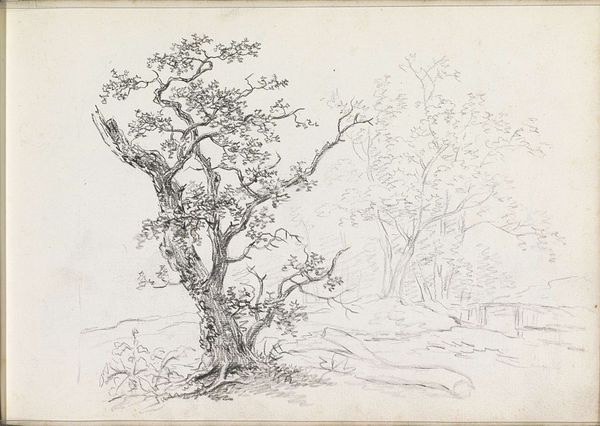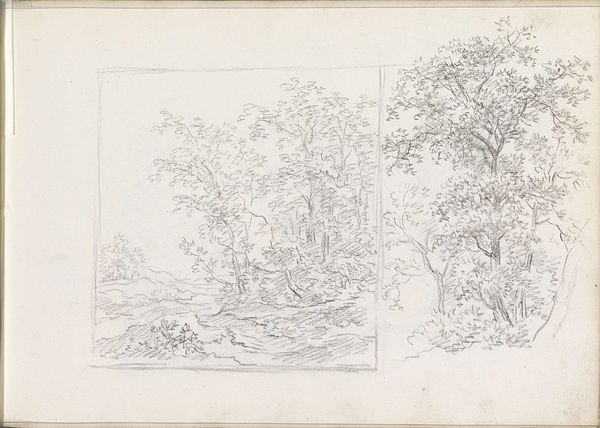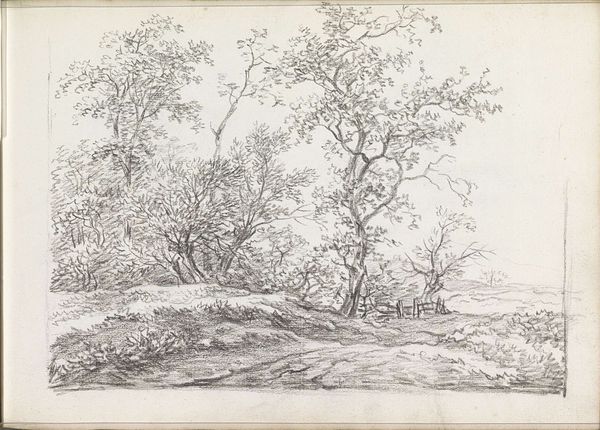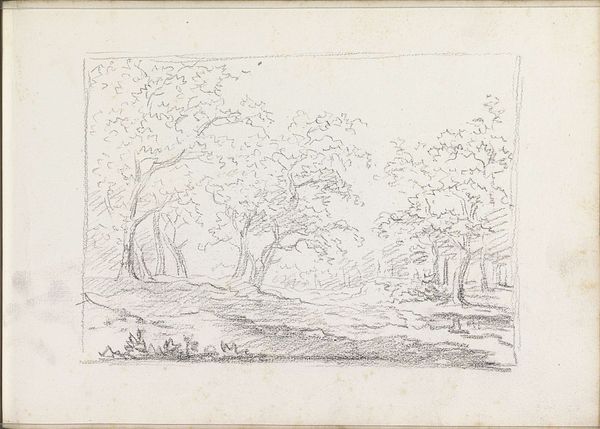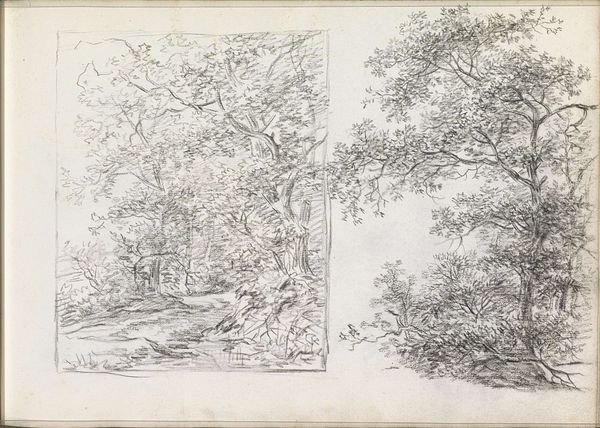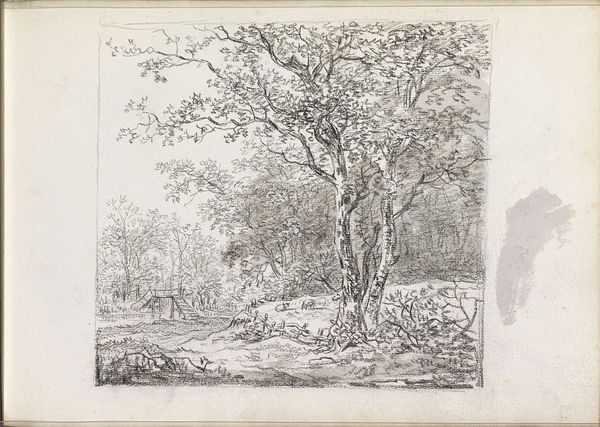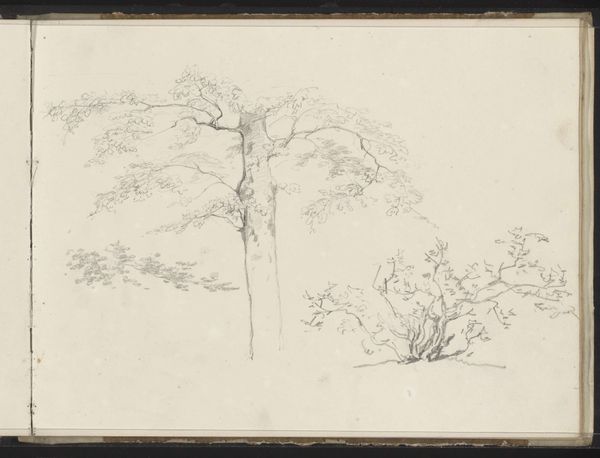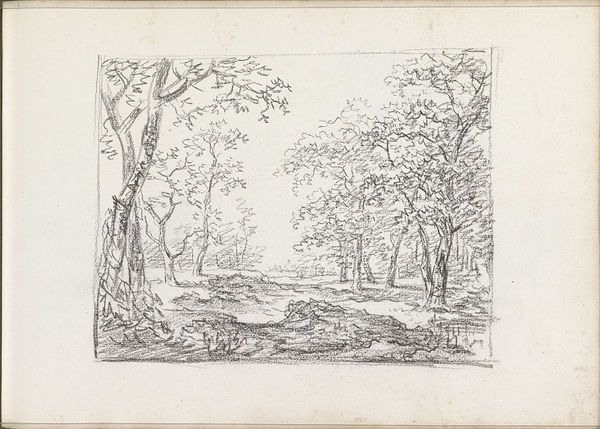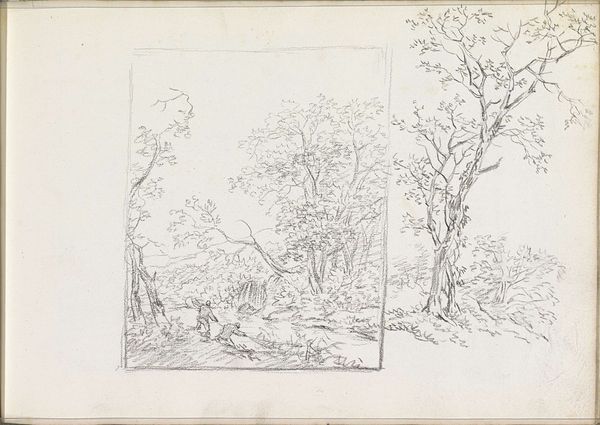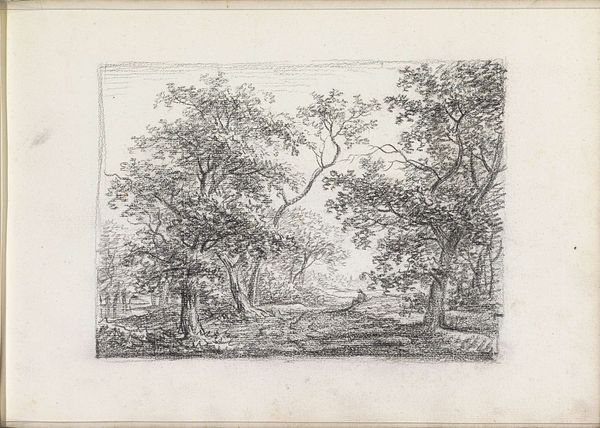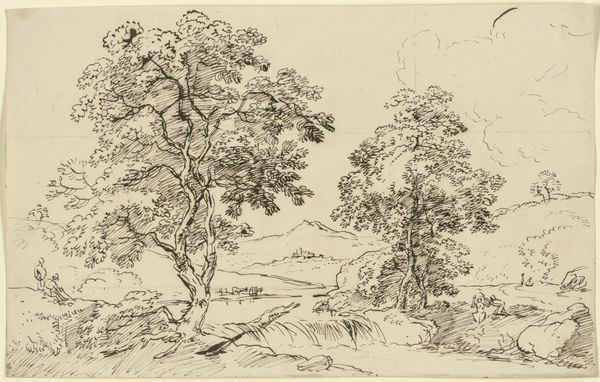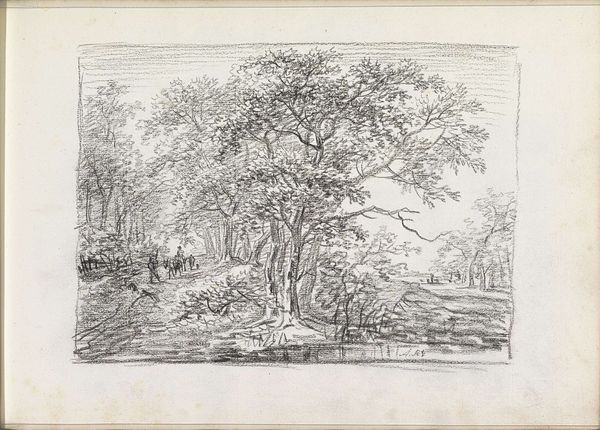
drawing, paper, pencil
#
drawing
#
landscape
#
paper
#
romanticism
#
pencil
Copyright: Rijks Museum: Open Domain
Curator: Before us we have "Landscape with Trees and Shrubs by a Waterside," a pencil drawing on paper by Andreas Schelfhout, circa 1811. What strikes you first about this piece? Editor: The density of the pencil work is incredible, almost like a woven fabric. It makes the forest edge feel dense and impenetrable. It’s very effective. Curator: Indeed. Schelfhout’s precise rendering really captures the textural qualities of the scene, especially that interplay of light and shadow. Observe how he varies the pressure of the pencil to create depth and contrast. We can practically feel the stillness of the water. Editor: But it's just pencil on paper. It is so unassuming. The social context here is essential: consider the availability of drawing materials at that time, the economic drivers for making art accessible to the rising merchant class. The paper, the pencil—who manufactured them and how? This tells a silent history. Curator: A valid point, though I would argue that its artistic merit transcends mere materials. Look at the subtle composition. The dominant tree on the left is visually balanced by the lighter, open area on the right, guiding the eye through the landscape. It is romanticism at its purest, a celebration of nature. Editor: Agreed, but the hand is evident here in every line. It begs us to consider the training involved in making it. Curator: Regardless, Schelfhout masterfully manipulates light and form within a relatively limited medium to convey such tranquility. I believe this reflects something universal. Editor: Perhaps. I also think understanding its creation informs our appreciation of its effects. A seemingly simple image bears a complex, layered past within. Curator: Absolutely. And hopefully, this discussion enriches the viewers understanding. Editor: Precisely. Thank you.
Comments
No comments
Be the first to comment and join the conversation on the ultimate creative platform.
